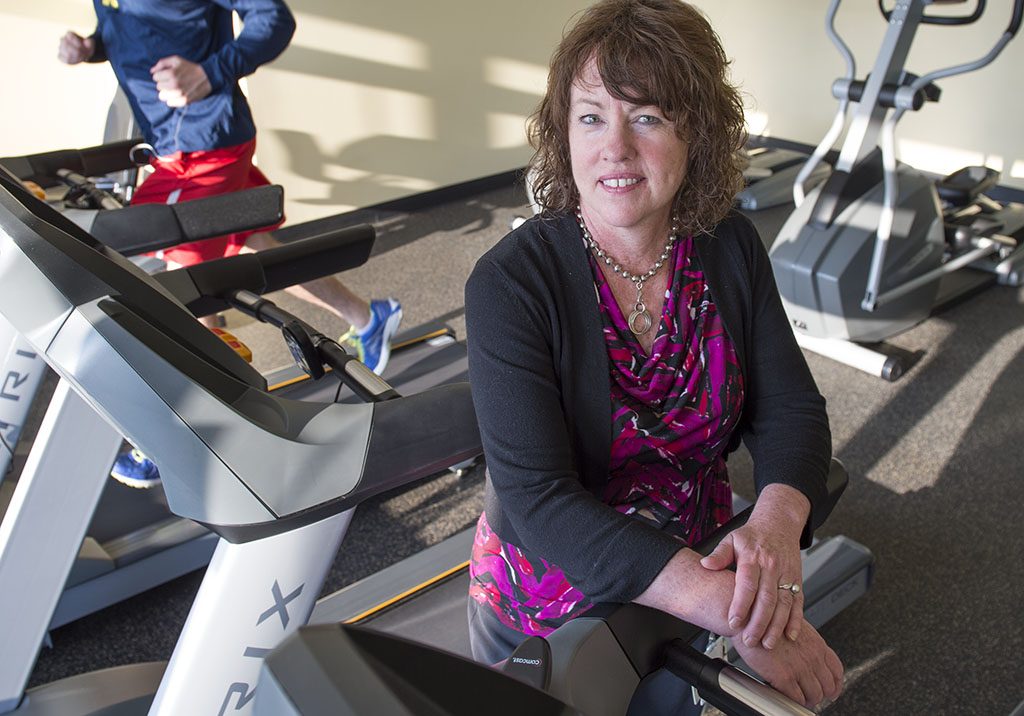
(Chris Clark | Spectrum Health Beat)
A recent celebrity death is focusing attention on a relatively unfamiliar safety concern: treadmill use.
Survey Monkey CEO David Goldberg, 47, husband of Facebook executive Sheryl Sandberg, died on May 1 after apparently falling while using a treadmill and hitting his head.
By the time he was found and received medical attention, it was too late.
The Wall Street Journal reported that there are about three deaths each year in the U.S. associated with treadmills. Last year, treadmills were responsible for an estimated 24,400 injuries treated in U.S. hospital emergency departments, with 39 percent of all injuries related to exercise equipment.
There has been speculation that Goldberg might have been on his cellphone while using the treadmill and then became distracted and fell. True or not, that would not be uncommon, said Kim DeLaFuente, MA, ACSM-PD, the community exercise educator for Spectrum Health Healthier Communities.
“People need to take precautions when using any exercise equipment,” she explained. “One of those precautions is to not be distracted. Most injuries can be prevented by eliminating distractions, listening to your body and using proper exercise technique.”
DeLaFuente has safety tips for treadmill users:
- Do not stand on the belt when starting the treadmill; straddle it instead. This prevents starting the treadmill at too fast of a speed.
- Stay focused! This is not the time to be texting or checking email.
- Good shoes are important. No flip flops or sandals!
- Step off and pause the treadmill if you are taking a drink of water.
- If your muscles tighten during exercise, pause the treadmill before stretching.
- Prior to exercise, take time to warm up for at least five minutes by walking at a slower speed. Cool down is equally important.
- Listen to your body. If you are experiencing symptoms that are not typical—chest pain, unusual muscle fatigue, excessive shortness of breath, or lightheadedness—slow down and stop if necessary.
DeLaFuente emphasized that exercise is safe for the vast majority of people and there is really more harm in inactivity.
“We don’t want people looking for another reason not to exercise,” she cautioned.
 /a>
/a>
 /a>
/a>
 /a>
/a>